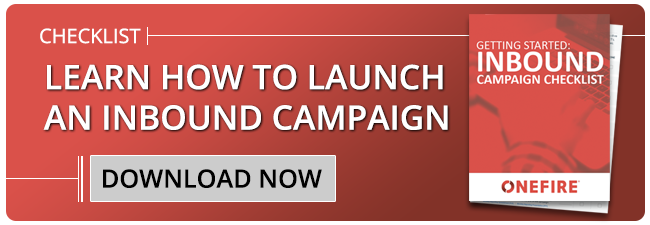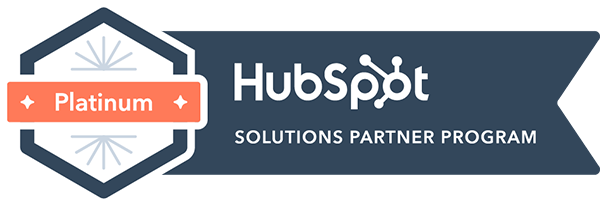
How often do you find yourself reading a news article online and minutes later you are watching videos on YouTube? The internet has the ability to shift our attention and quickly spark new interests. This power often falls on calls-to-action (CTAs); images with text that prompt visitors to take action on an organization’s offer.![]()
CTAs direct the visitor to a landing page where they can learn more information about the offer or organization in exchange for their contact information. This transaction turns the visitor into a marketing qualified lead for your insurance Brand, resulting in a higher website conversion rate.
But how do you compel visitors to click on your CTA? Or even notice it? CTA placement on your website is vital to getting noticed by your visitors, but it is also important to write CTA copy that speaks to your audience and sparks interest in the topic. We have compiled a list of 14 tips for writing killer call-to-action copy that will help your organization craft compelling CTAs.
14 Tips for Writing Killer Call-to-Action Copy:
Begin with subjects and verbs: This may seem like common sense, but it is surprising how often this concept is forgotten. Begin your CTA copy with a subject and verb to help your visitors quickly glean the meaning of the sentence. Also, make sure this copy is noticeable and not hidden at the bottom of your CTA. If you do not include a verb in your CTA copy, you aren’t prompting readers to take action on your offer.
Keep it short and concise: As with all marketing materials, it is important to keep your CTA copy short, sweet and to the point. You want to make sure your visitor understands what your offer is and its value, but do not make your copy so intricate that it takes too long for them to read and understand.
Keep your CTA copy between 90 and 150 characters to ensure that you are being short and concise. You have a limited opportunity to catch and keep a recipient’s attention, so be sure your copy attracts and catches their interest.
Convey value: Your CTA should clearly convey the value of your offer to your visitor. List off all the key benefits of your offer and pick the most critical one to base your CTA copy on.
Example: “Find out the 13 secrets to CTA optimization.”
Make it personal: CTAs allow you to tailor your offer and copy to a specific target audience. Clearly understand where your visitor is and what they are searching for on your site.
Once you understand their needs and preferences, you can tailor your CTA copy to adhere to them, and place your CTA on an appropriate spot on your site to increase conversions.
Use adverbs sparingly: Adverbs are typically recognized by their “ly” ending, but they can also take different forms. Their function is to modify constituents other than nouns. It is important to use these sparingly as subjects and verbs create a stronger message and compel your visitor to click.
Create urgency: The goal of your CTA is to get clicked. Create a sense of urgency to attract visitors to click on your CTA. Your CTA should answer, “Why should I do this today?” In your CTA copy, emphasize seasonality, special discounts, or use adverbs like “now” and “today” to instill urgency.
Example: “Join our newsletter today for access to our SEO-made-easy templates.”
Use customer testimonials: Testimonials are a great way to increase CTA conversions. They offer third-party endorsement and motivate visitors to take action on your offer.
A customer quote about how your offer helped them solve their problems can often capture all the information a prospective customer needs to know before they click through to your offer.
Include numbers: HubSpot Social Media Scientist Dan Zarrella stated, “When people are on the web, they are looking for specificity.” Including data in your CTA copy will help cut through the clutter of vague content on the Internet, give credibility to your offer, and convey a strong message to your audience.
Turn it into a bonus: Keep visitors engaged on your website by turning your CTA into a bonus offer. If your visitor subscribes or downloads an offer, send them a CTA that highlights a bonus offer they can receive for taking the previous action.
Have the bonus offer relate to their activity on your site to determine their interest. Turning your CTA into a bonus offer will keep visitors thinking of you and active on your site.
Example: “Thanks for downloading our eBook about optimizing calls-to-action. You now have access to our additional resources on website optimization.”
Make it noteworthy: Allow your call-to-action to catch your visitors’ eye by making it noteworthy. Include something in the news that could pertain to your industry or offer, and piggyback on other newsworthy content. This will allow your CTA to be noticed online.
Ask questions: Adding questions to your CTA copy serves to predict what the visitor might be interested in and sparks their interest even more. Use a compelling question followed by a short response to peak your visitors’ interest in your offer and compel them to click through.
Be confident in your language: Be bold and confident while presenting your CTA offer. Stand by what you are offering to your visitor, and convey confidence in your CTA to help visitors understand and click through to your offer.
Example: “The only guide to calls-to-action you need.”
Make language less technical and more practical: Stay away from overly technical jargon. Those terms can imply forced complexity and be unattractive to your visitor. Emphasize the benefits of your offer and how it can make your prospect more resourceful, but do it in a way that is inspiring to your visitor. Some terms that are most viewed in blog posts and CTAs include:
- Insights
- Analysis
- Advice
- Review
- Top
- Best
Be subtle: People like to think that every decision they make is derived from some logic they came to on their own. Compel your visitors to click on your CTA offer in a way that makes them feel like it was their idea. Experiment with language that is less commanding and more thought provoking and see how that affects your click-through rate.
CTAs are an important asset to your website and can help move visitors through your sales funnel. Ensure that you are encouraging visitors to click on your CTAs to discover more information by writing CTA copy that compels them to take action.




